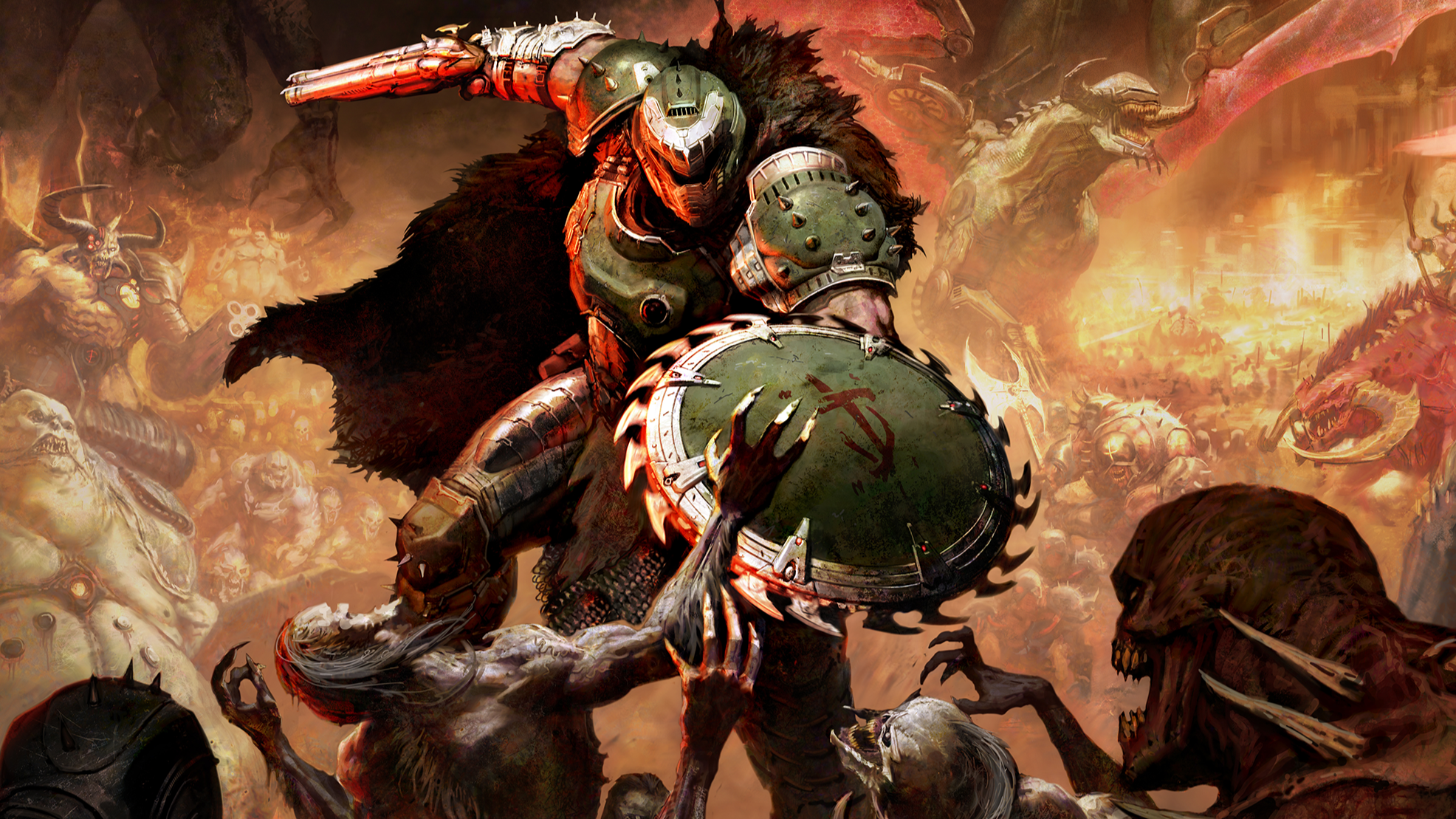## Doom: The Dark Ages – A Missed Opportunity on PC?
Remember the heart-pounding rush of chainsawing hordes of demons in the original Doom? The satisfaction of blasting your way through hellspawn with unparalleled freedom? PC Gamer is saying Doom: The Dark Ages feels like a betrayal of those core values, a game designed for consoles first and foremost.

Beyond the (Dark) Ages

Doom: The Dark Ages plunges players into an intriguing new corner of the Doom universe, a dimension steeped in a gothic, “Dark Ages”-inspired aesthetic. While the game is a prequel to the 2016 reboot, it diverges from the familiar futuristic Hell of previous entries. Instead, it presents a world where technology and sorcery collide, creating a unique visual tapestry that blends medieval imagery with demonic grotesqueries.
This setting isn’t just a visual flourish; it has deeper thematic implications. The Dark Ages in this context serves as a metaphor for a period of stagnation and decay, where knowledge and progress have been corrupted by sinister forces. This mirrors the core conflict of the Doom franchise, where humanity’s hubris in wielding technology leads to its downfall.

A Symphony of Sinister
The new enemies encountered in The Dark Ages amplify this gothic horror aesthetic. Gone are the cybernetic demons of the 2016 Doom; instead, we see grotesque creatures that seem ripped from the nightmares of medieval folklore. Think hulking ogres wielding crude weapons, nightmarish creatures with tentacles and claws, and demonic knights clad in rusted armor. These designs are not only visually arresting but also serve to highlight the game’s themes of corruption and decay.
The new enemies also showcase a fascinating evolution of the Doom combat experience. While the fast-paced, shotgun-blazing glory kills remain, the introduction of a parry system adds a layer of tactical depth. Players must now learn to anticipate enemy attacks and react accordingly, rewarding skillful timing and precision. This shift towards a more deliberate combat style complements the game’s darker, more atmospheric tone.
More Than Just a Meat Grinder
Despite its intense action, Doom: The Dark Ages hints at a richer narrative experience than its predecessors. The demo provided glimpses of a story that delves into the origins of Doom Guy’s connection to the dimension he finds himself in. The sinister cabal of alien space Catholics who control the planet add an intriguing layer of mystery, hinting at a world with complex political and religious conflicts.
The story isn’t explicitly told through cutscenes or lengthy dialogues; instead, it unfolds through subtle environmental storytelling, cryptic messages, and the interactions between Doom Guy and the few remaining human survivors. This approach allows players to piece together the narrative at their own pace, fostering a sense of discovery and intrigue.
Familiar Frenzy, New Flavors: The Evolution of Doom Gameplay
Rhythm and Flow
The introduction of parry-based melee combat doesn’t simply add a new mechanic; it fundamentally alters the rhythm of the Doom experience. While previous games emphasized a frenetic pace of constant movement and aggression, The Dark Ages encourages players to switch between two distinct combat styles. The familiar, blistering-fast run-and-gun gameplay remains, but it’s now punctuated by moments of deliberate, strategic combat, where players must carefully time their parries and counterattacks. This creates a more dynamic and engaging gameplay loop that keeps players on their toes.
Variety is the Spice of Hell
The demo showcased a diverse range of level designs and gameplay encounters that highlight the willingness of the developers to experiment while staying true to the core tenets of the Doom franchise. From the claustrophobic corridors of a medieval castle to the open expanse of a ruined cityscape, each level offered a unique challenge and a distinct atmosphere. The inclusion of set-pieces like the mech section and the dragon ride further demonstrate the developers’ commitment to providing a varied and memorable experience.
A Glimpse into the Future
Doom: The Dark Ages represents a bold step forward for the franchise, pushing the boundaries of the classic Doom formula while retaining its core identity. The game’s willingness to experiment with new mechanics and gameplay experiences while staying true to its roots suggests a bright future for the Doom series. Whether this new direction will resonate with all fans remains to be seen, but one thing is certain: Doom: The Dark Ages promises to be a truly unique and unforgettable addition to the franchise.
Conclusion
So, does Doom: The Dark Ages fundamentally betray the soul of the franchise? Does its console-centric design overshadow the PC experience? While PC Gamer’s article makes a compelling case for the latter, the answer isn’t as black and white as a demon-infested corridor.
The article highlights how The Dark Ages’ controls, camera, and pacing seem tailored for a controller, impacting the fluidity and precision often cherished in PC Doom. This begs the question: is this a shift in Doom’s identity, or a natural evolution to cater to a wider audience? The future of the series might very well lie in this delicate balance – honoring the PC roots while embracing console comfort.
Ultimately, Doom: The Dark Ages presents a fascinating dilemma. It’s a game that excels in its own right, but leaves us wondering what sacrifices were made along the way. Does this signal a broader trend in PC gaming, where console conventions increasingly dominate? Only time will tell, but one thing is certain: the future of Doom, and perhaps PC gaming itself, hangs in the balance.